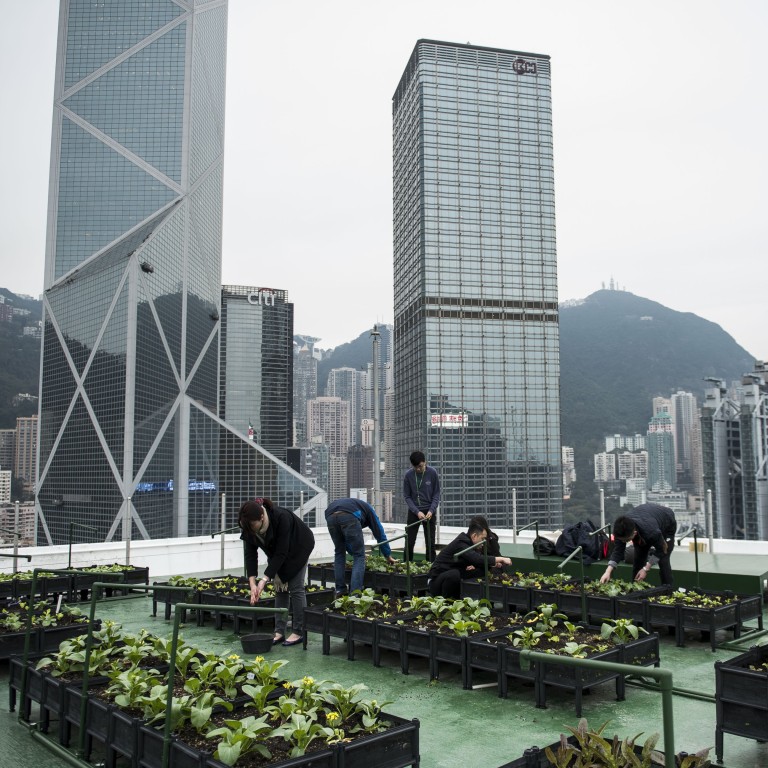
How urban farms could solve our future food problems and promote a green lifestyle
- Projects such as Melbourne Skyfarm and those by Hong Kong’s Rooftop Republic are turning busy urban areas into hubs of food production
- Urban farms can also change the dynamics of a building, bringing people together and encouraging people to lead sustainable lives
In dense cities around the world, tall buildings are proving fertile ground for food production.
As urban farms appear in more places, including Hong Kong, it is no longer pie-in-the-sky thinking to believe that concrete skyscrapers, long blamed for edging out nature to pack in more people, could be the very things that draw plants and wildlife back.
In fact, says Brendan Condon, director of Melbourne Skyfarm – an ambitious project announced in the southeast Australian city last month – inner-city buildings offer an ideal growing environment.
“If you look at cities through a horticultural and engineering lens, there are huge opportunities to grow food,” Condon says, such as the large volume of rainwater run-off from rooftops and significant quantities of food waste that could be hot-composted as fertiliser.
“Then if we add clever food-growing architecture, we can intercept those resource streams and spin out huge amounts of food within the urban environment.”
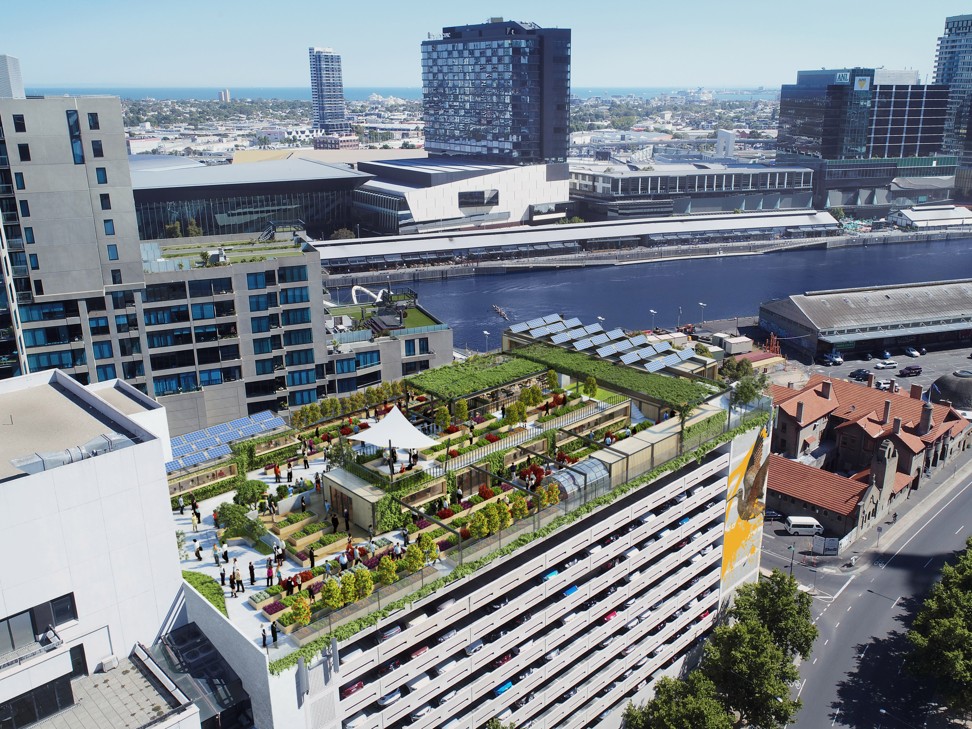
Food-growing architecture refers to systems that can easily integrate into modern cities and use spare spaces such as rooftops, vacant walls, backyards, terraces, laneways, public spaces and car parks. In a test garden grown for Skyfarm, a single car parking space delivered 150 kilograms (331 pounds) of produce in six months.
Melbourne Skyfarm will convert a 2,000-square-metre (21,500 square foot), 16th-floor rooftop car park in Melbourne’s central business district into an urban farm and is slated for completion by the end of 2020.
It is a collaboration between three Melbourne-based sustainability companies – Odonata, Biofilta and The Sustainable Landscape Company – with support from partner companies and local government.
No sunlight? No problem: preserved plants for indoor spaces
Its innovative, water-efficient, pop-up farming system, designed and manufactured by Biofilta, is expected to grow five tonnes of fresh produce per year. Wildflowers, bee hives and a micro bat habitat will help to attract wildlife.
There are other benefits, Condon points out. Being a huge slab of concrete and steel, the existing car park has a high thermal mass – the ability to absorb and store heat energy – which contributes to a higher urban temperature.
“By cladding that with living green roofs and urban farms, we are turning a heat bank into a cool zone, so it becomes a really important contributor to liveability and health in the city.”
Hi-tech classrooms and a design hub on site will be used to showcase the latest developments in conservation and sustainability projects worldwide.
According to Nigel Sharp, director of Melbourne Skyfarm and chairman of Odonata, the project represents a fundamental shift in what it means to do business today.
“It is a bold and exciting step towards a future where nature in cities is the norm; a world where businesses seek to not only minimise their impact on the environment, but actually seek to generate good,” he says.
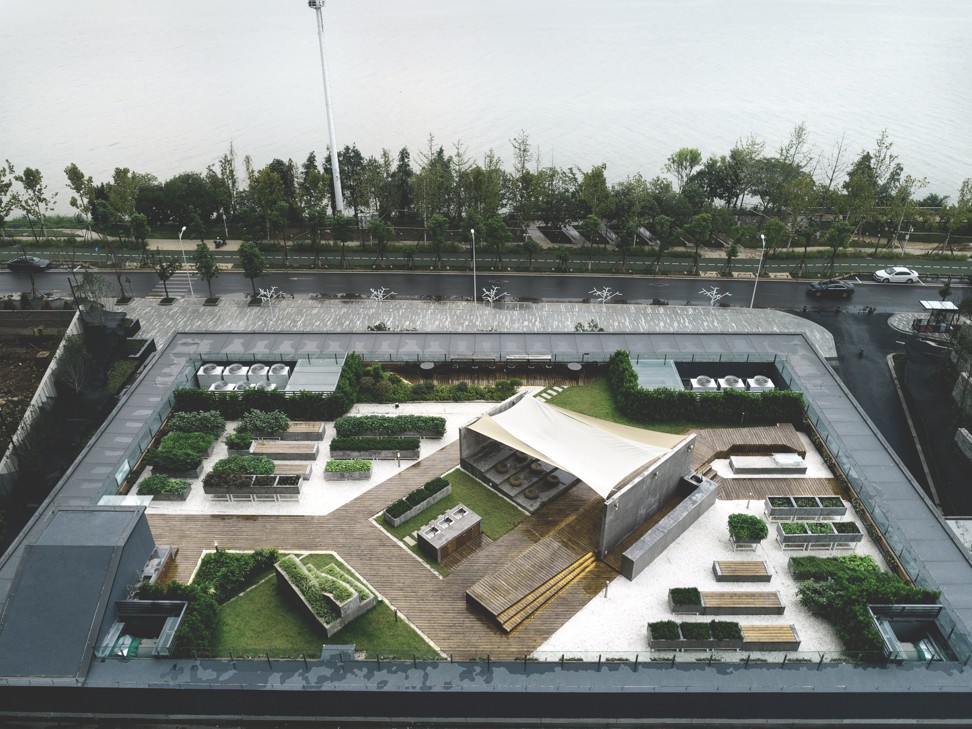
Condon, who is already fielding strong demand “from China in particular” for technical tours of the project, sees this as an “optimistic platform” for closed-loop, climate-adaptive cities of the future.
“At Skyfarm we’ll be showing how by using integrated, sustainable technologies we can actually live carbon-neutral lives, tackle climate change and do it in an economically viable way,” he says.
Back in Hong Kong, Rooftop Republic, an urban farming social enterprise, has completed 48 rooftop farms in the city, mostly in the central business district, and two in mainland China (Guangzhou and Changsha).
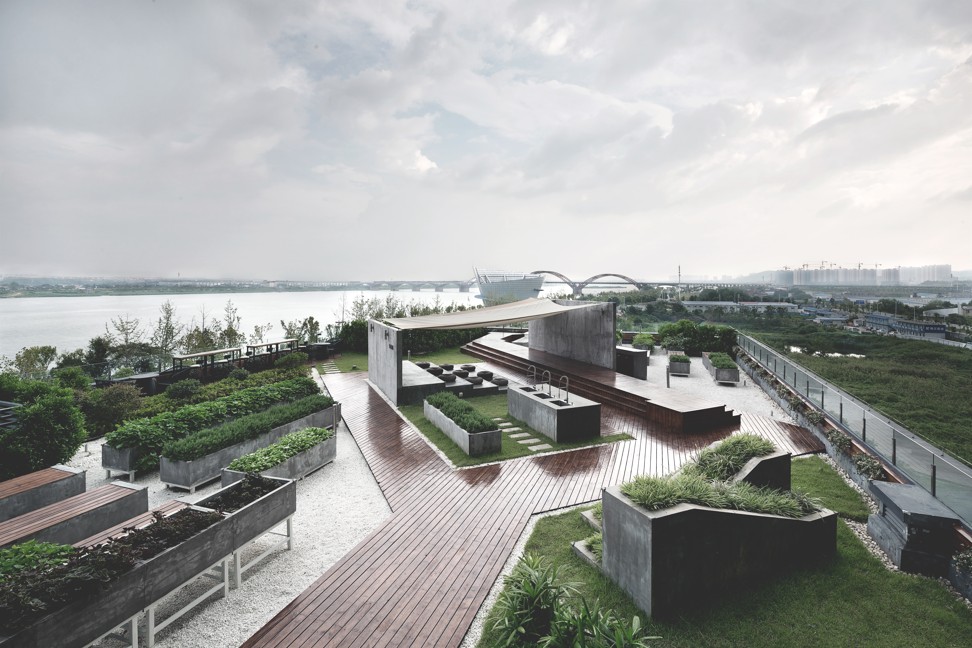
Its latest project saw it take up a consultancy role for a 9,000-square-foot farm atop YKK Building Phase 2 in Tuen Mun, the second urban farm project initiated by real estate company JLL. Its first, atop the Bank of America Tower in Admiralty, opened in 2014.
Chung Chi-hung, executive director of property management at JLL, says its rooftop farms are “absolutely viable”. On average, the Bank of America Tower farm produces about 660 kilograms (1,455lbs) of organic vegetables in four harvests a year, all of which are donated to the charity Feeding Hong Kong. The farm is tended by volunteers from among JLL’s employees.
The YKK farm is “oversubscribed” by tenants of the building, who work the plots during their lunch break and after work, even bringing their kids on weekends.
“They enjoy the farming, as it can help them to relax during a stressful working day,” says Chan Chi-keung, senior director of property management at JLL. “And they can enjoy half of the harvest, with half donated to charity.”

Rooftop Republic’s farm in Changsha, Hunan province – for which it is the project owner and manager – is one of the first in the city. It was designed by its agriculture partner, Hong Kong-based design agency Beams Creative, and is located in a private residential development. The 600-square-metre (6,458-square-foot) space above the clubhouse, completed in late 2017, provides plots for growing organic vegetables, and includes a classroom and rooftop bar.
Donte Dandridge, design director at Beams Creative, says the aim was to give city people “a taste of rural life”. Embodying the principle of sustainable development, all materials used for the farm’s construction were non-synthetic and consisted primarily of cement and wood.
Andrew Tsui, co-founder of Rooftop Republic, says that urban farms are more than spatial transformations and can promote a green lifestyle. “In order for that to happen, we need to think of cool concepts, and have developers or landlords on board to utilise idle spaces in cities,” he says.
It is clear that we need to find an ecological alternative to our current food system
Farming changes the dynamics of a building, Tsui says. “We have farm-to-table events in all our projects, and people bring their kids. We’ve had cases where people have been working on the same floor for years, but they’ve never spoken to each other as work is so busy. Communities need this kind of relational space.”
Not every building is a candidate – it has to receive enough sunlight, for instance. “That’s why we aim to engage more architects and designers in these projects,” Tsui says.
He believes the Changsha project, being a new development, could encourage urban planners. “We really want to work with them in planning for the ultimate benefit of people using that space.”
One new project designed in such a way is the Biotope building in Lille, France, by Henning Larsen Architects. The new headquarters for the European Medicines Agency, the building was designed to incorporate vegetation, prioritising access to daylight and fresh air. It is scheduled for completion in December this year.
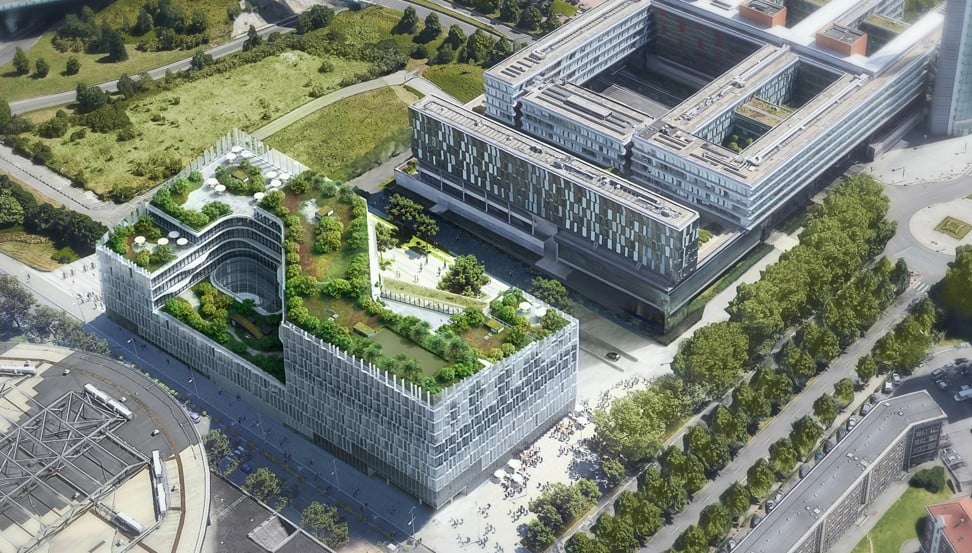
Salka Kudsk, head of landscape at Henning Larsen, says plants for the rooftops and terraces are found in the local habitat and naturally feed the insects and animals living in the area.
“We have also made a garden [consisting of] herbs, many different vegetables and fruit trees, which the kitchen staff will take care of and use in the canteen. Staff can go pick fruit in their break,” she says.
As city landscapes become increasingly dense, Kudsk sees more need to use rooftops to create green areas for people and wildlife. “For example, nearly every new development in Copenhagen today is designed with some form of green roof garden,” she says.
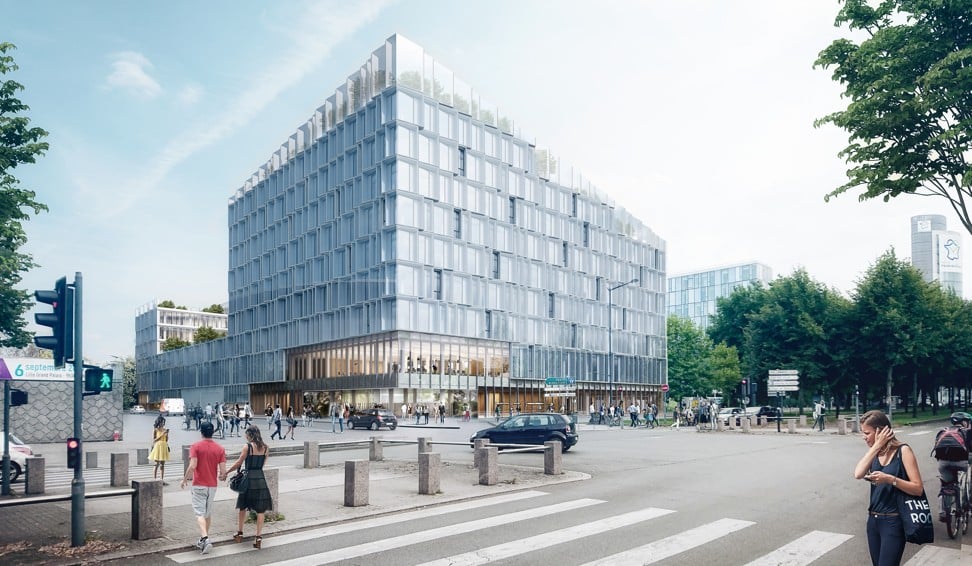
Also sharing that vision is Austrian architect Chris Precht, who with his wife, Chinese architect Fei Precht, founded their sustainability-focused practice Precht this year. (Chris Precht previously co-founded Beijing-based studio Penda with architect Dayong Sun in 2013.)
Precht, 35, believes it is time for young architects to “speak with a fresh voice” that responds to the challenges of our time.
“Whenever you build a building, you seal off an area of nature that usually belongs to our natural environment,” he says.
He explains that today’s architects can reverse that trend with buildings that form their own natural ecosphere – such as structures made of wood, filled with edible plants, nesting birds and bees – rather than designing isolated objects whose raison d’être is to be the tallest or the shiniest.
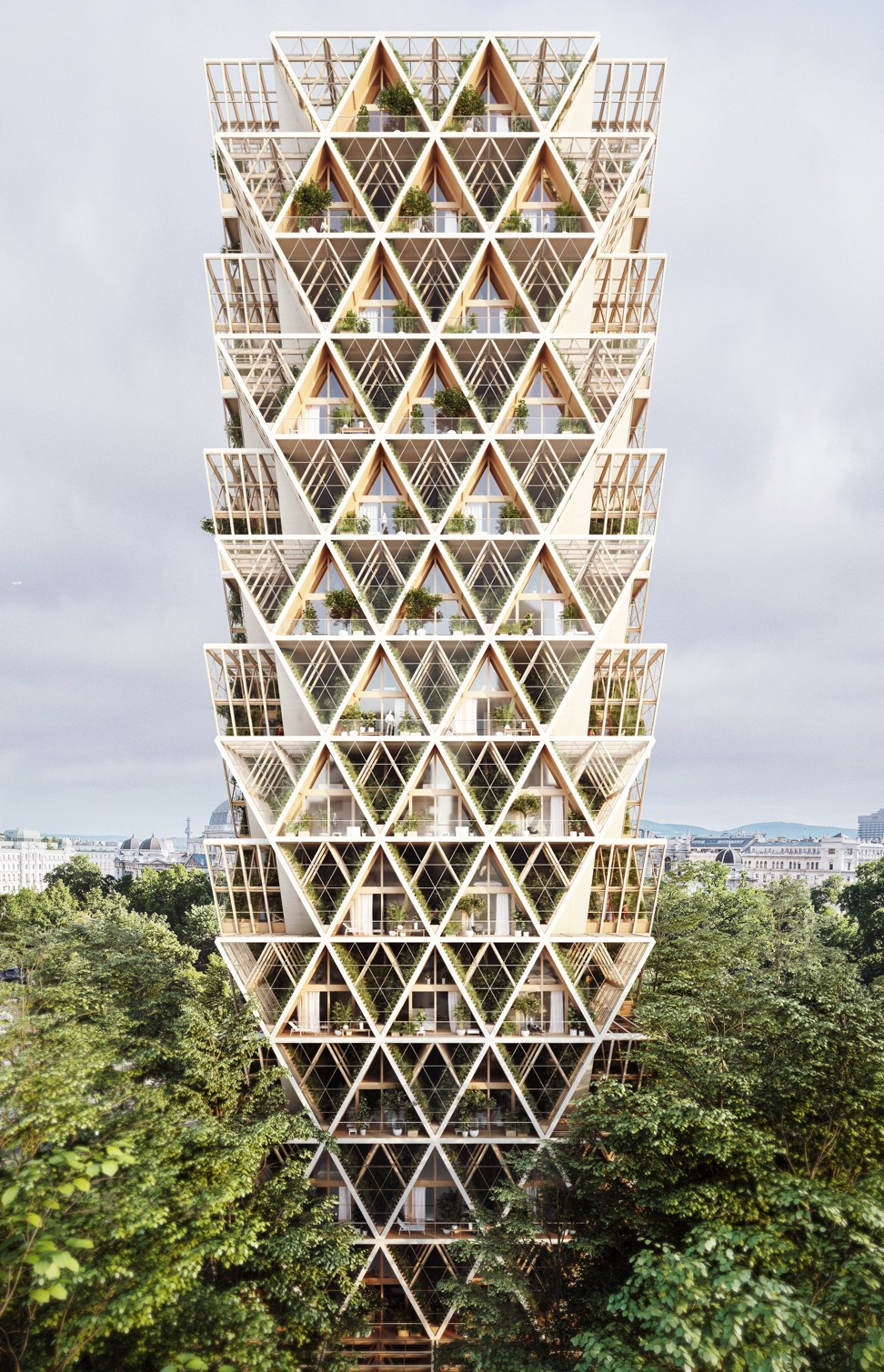
In China, the Prechts undertook a handful of projects adding urban gardens to cafes, and their wish to reconnect people with food led to their Farmhouse concept – a prefabricated timber building (scalable up to multiple storeys high) where every unit has its own greenhouse.
The building is self-sustaining, collecting rainwater and recycling grey water, harnessing heat to help grow the vegetables, and composting food waste as nutrients for new crops.
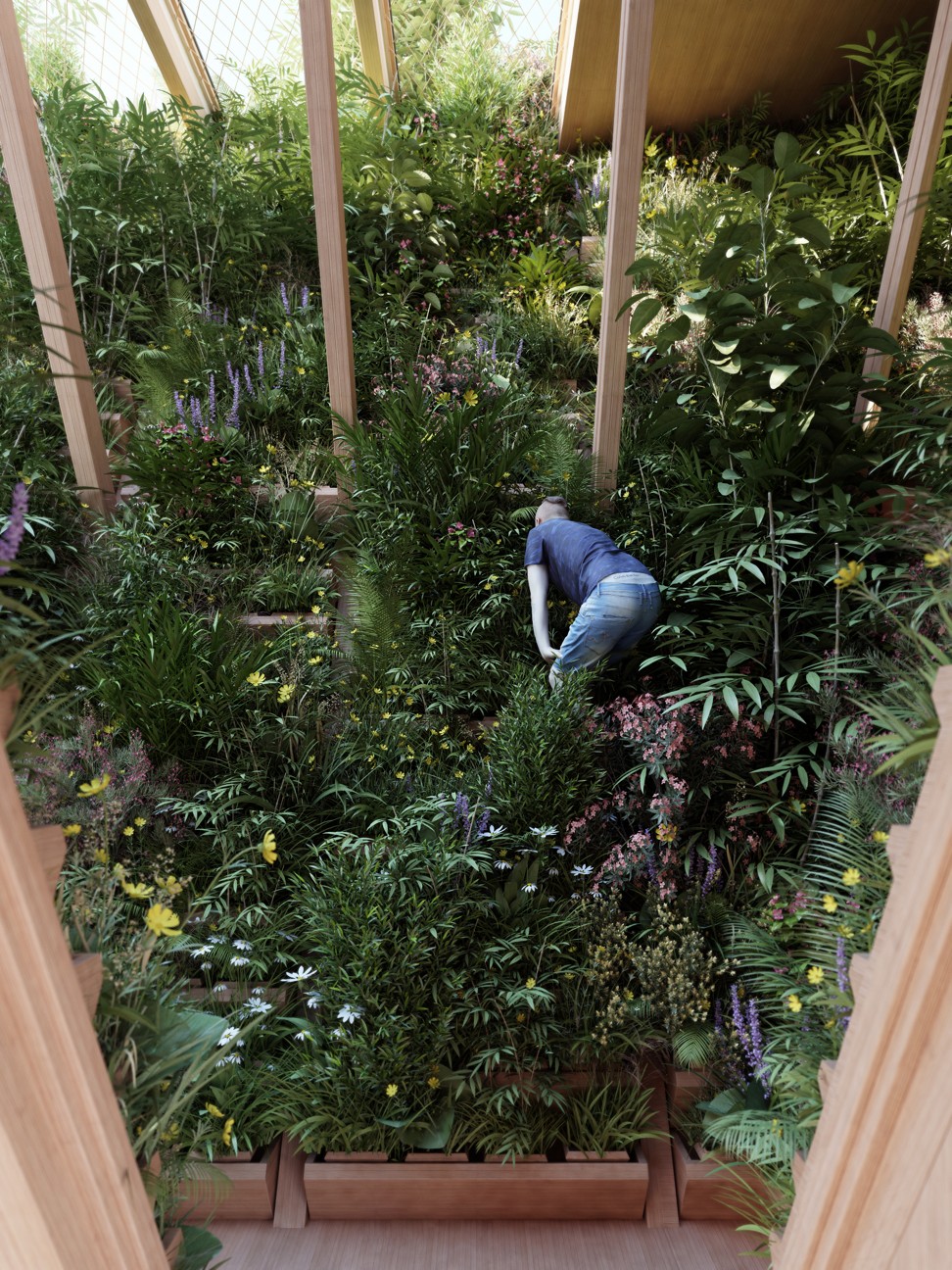
In the next 50 years, Precht says, more food will be consumed than in the last 10,000 years combined, and 80 per cent of that will be eaten in cities. “It is clear that we need to find an ecological alternative to our current food system,” he says.
The Prechts estimate that The Farmhouse will cost about 20 per cent more compared to concrete and steel construction. They are hopeful a developer somewhere will commission the project, and are fielding expressions of interest.

